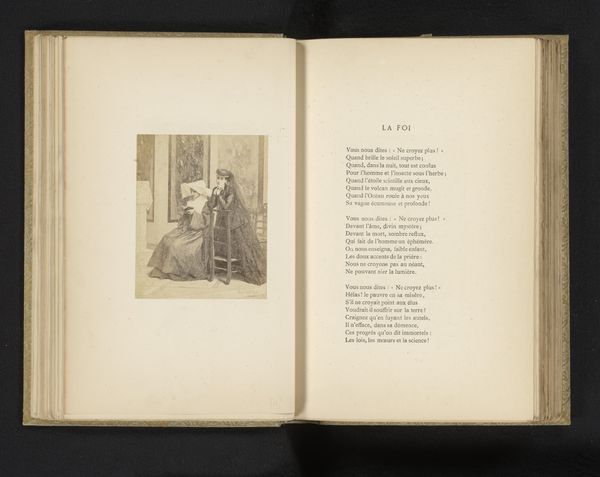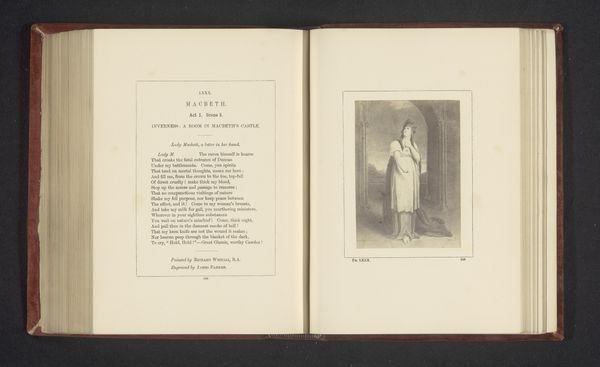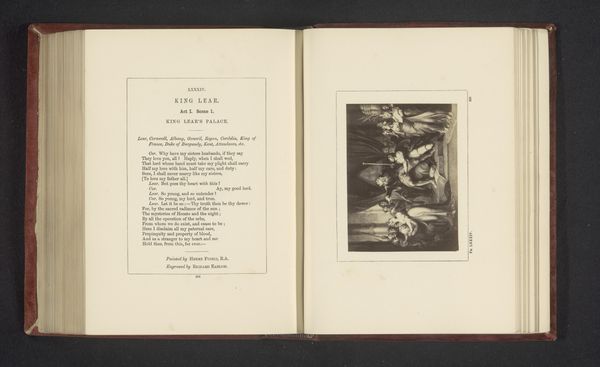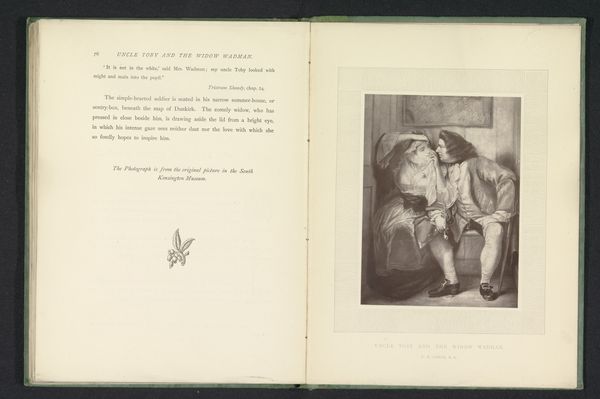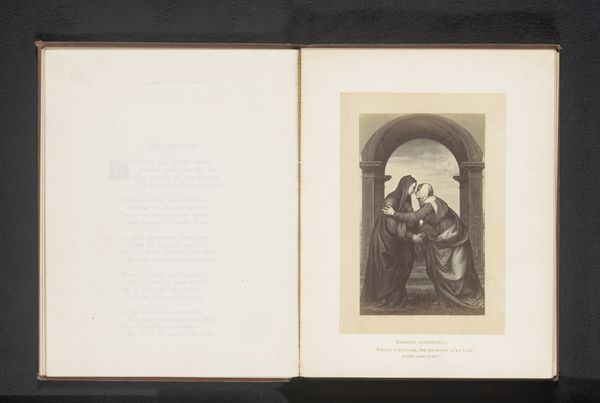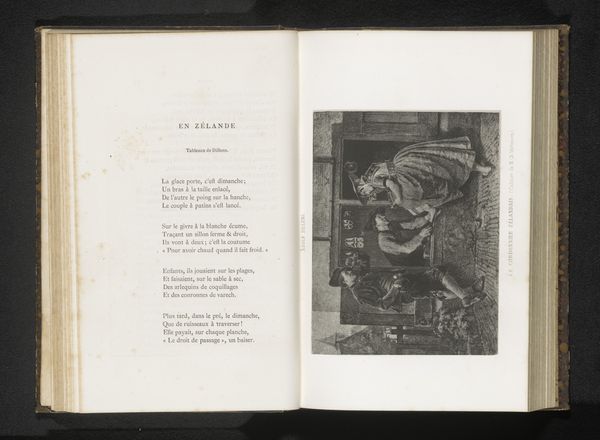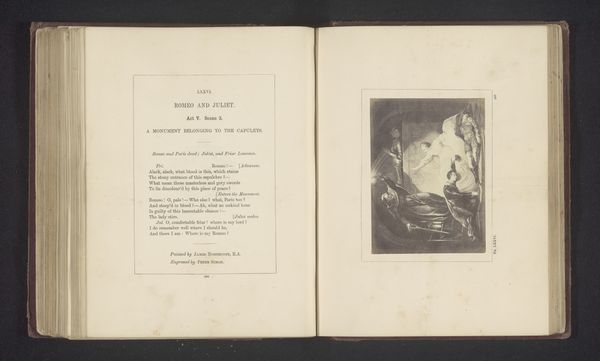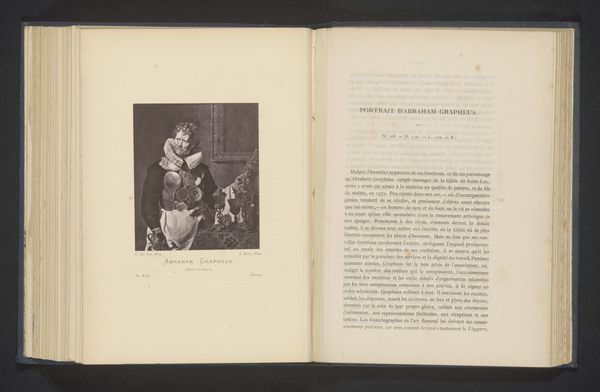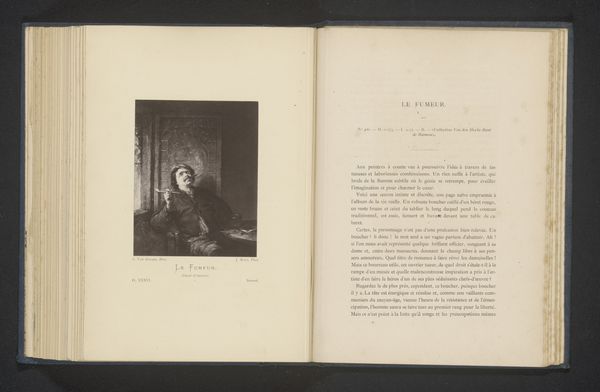
Dimensions: height 143 mm, width 114 mm
Copyright: Rijks Museum: Open Domain
Editor: We're looking at a reproduction of "La Sortie," or "The Exit," by Alfred Stevens, dating from before 1867. It’s presented as a print within a book. It feels intimate, like a stolen glance at a private moment. What stands out to you about this piece? Curator: What I find most compelling is how this work participates in constructing and reflecting the identity of the emerging bourgeoisie. Stevens catered to that demographic, depicting scenes of elegant domesticity, subtly engaging with themes of class, leisure, and social performance. Consider the setting: a well-appointed interior, but glimpsed as the woman leaves. What does this "exit" signify? Is it a physical departure, or a symbolic one, perhaps from certain social expectations? Editor: So, the act of leaving, rather than the destination, is the focus. The viewer is outside the door. Curator: Precisely. We, the viewers, are positioned as outsiders, perhaps longing for or critically examining this world. And let's note the inclusion of the dog – a clear symbol of domesticity and loyalty, but also a marker of status. Stevens masterfully utilizes these visual cues to reinforce ideas about bourgeois life. It prompts us to question how images, like this one, reinforce societal hierarchies, right? Editor: Right. I was drawn in by its beauty, but now I’m also seeing the artist's intention, which engages the audience's perceptions about class and status. Curator: Exactly! Reflect on the historical role of salons and exhibitions, these artworks weren't just passively viewed; they were actively debated, shaping and being shaped by the viewers opinions. It helps us recognize the print's significance in circulating these values and visual conventions among a growing middle class. Editor: It’s like a whole conversation about social dynamics condensed into a single image. Curator: Absolutely. Stevens understood that paintings could be powerful tools, and this image exemplifies how art became entwined with the social and political landscape.
Comments
No comments
Be the first to comment and join the conversation on the ultimate creative platform.
